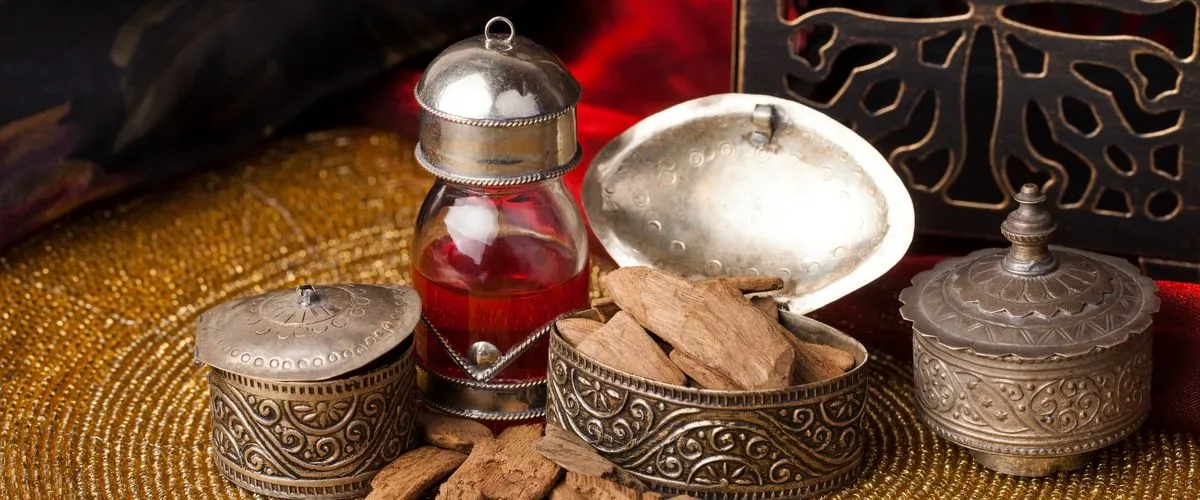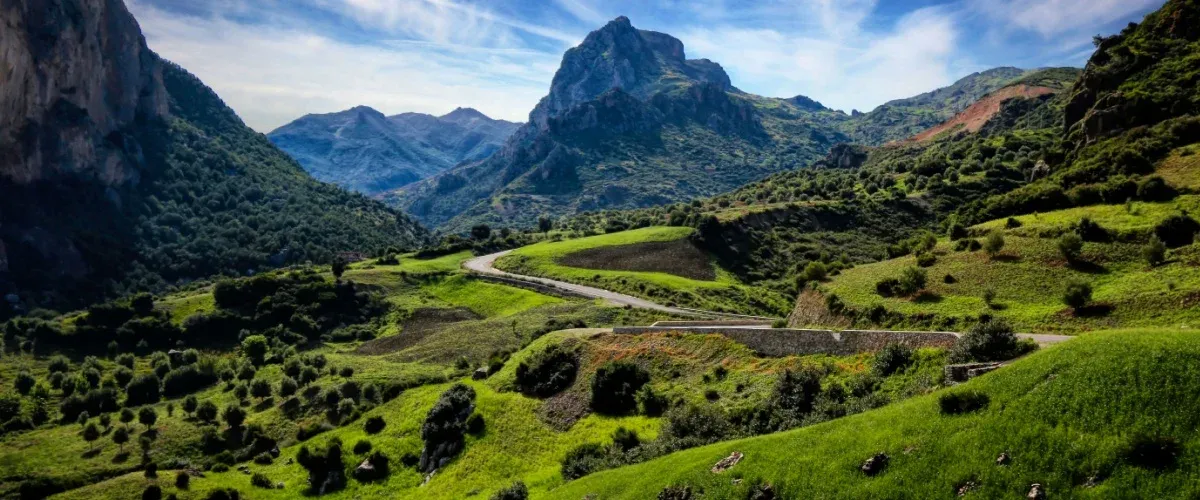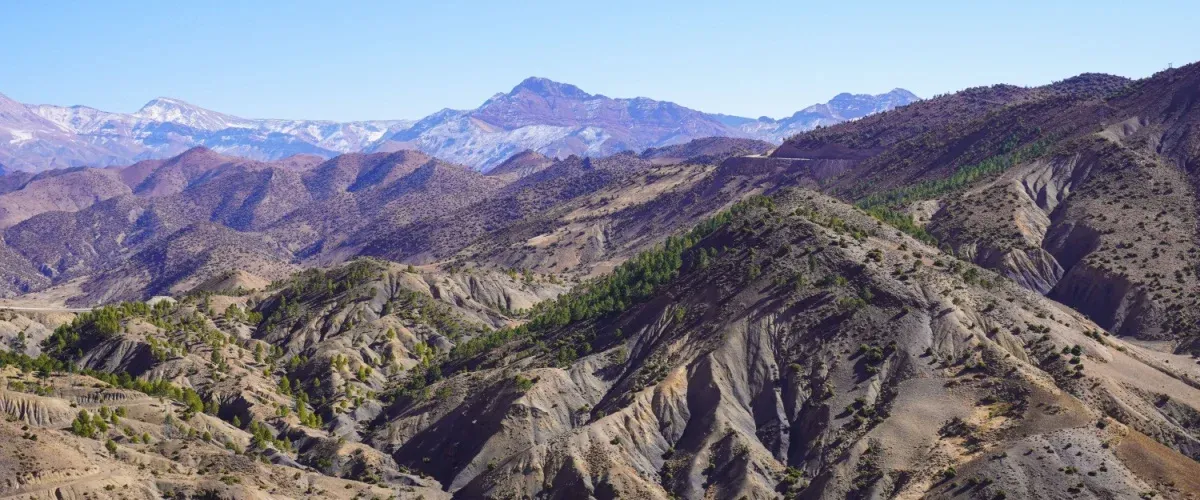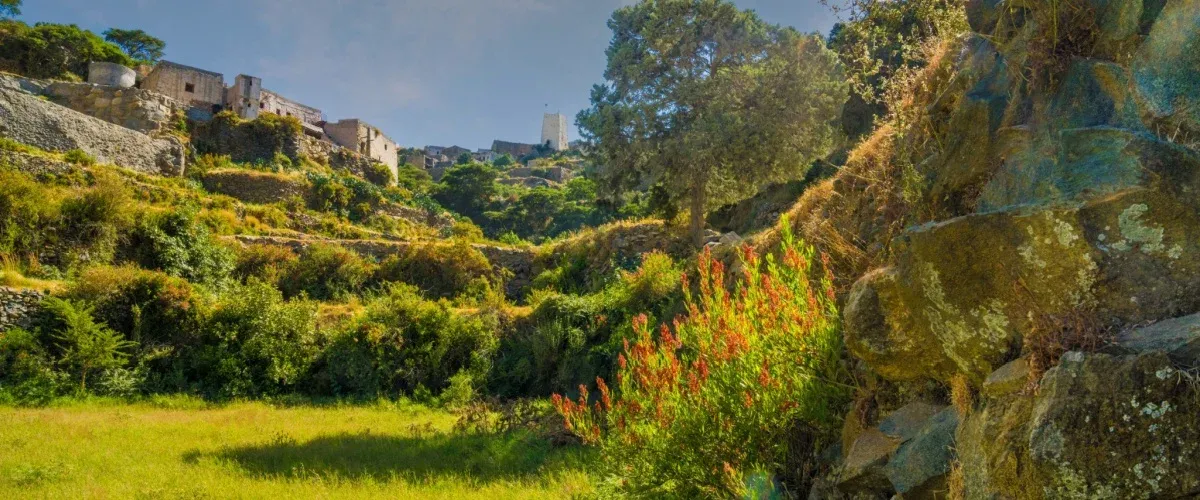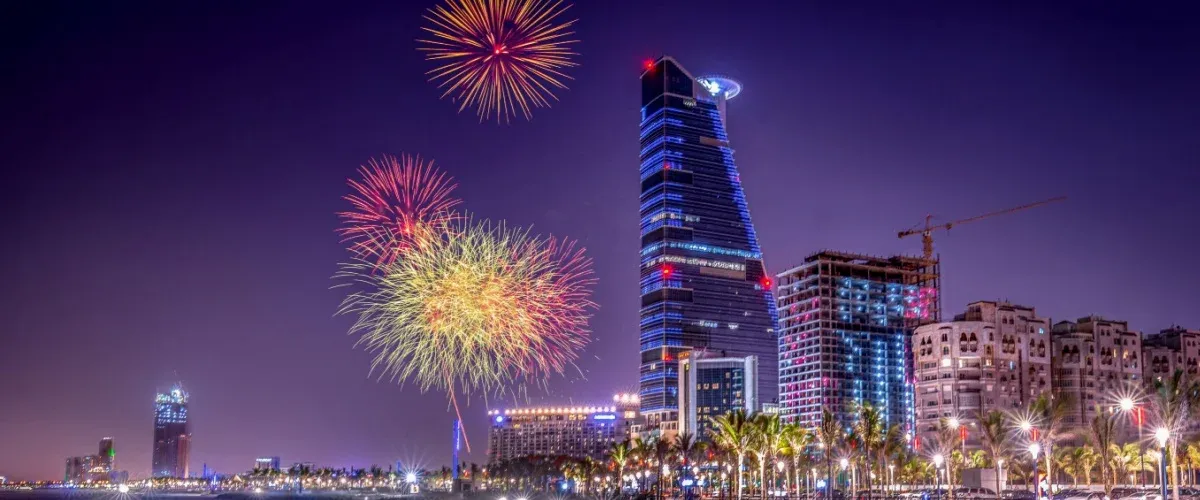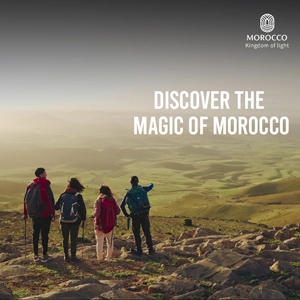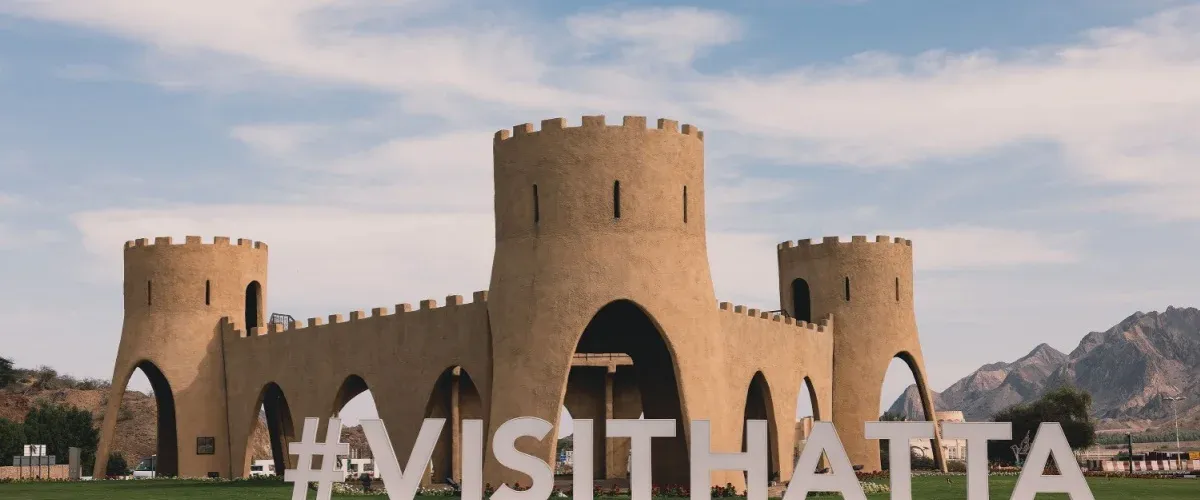Have you ever been to a Qatari house? Ever wondered what a Qatari house smells like? Well, the beautiful aroma you smell is due to the Bakhoor tradition that is readily practiced in Qatar. More often than not it’s the fragrance of burning agarwood. When translated in Arabic agarwood means “oud”. Just to clarify! Not the instrument that gives out a sweet melody. Oud, here is the dark heartwood that is made from the trees. Whereas Bakhoor is the name of the smoke that comes out on burning the raw oud.
Bakhoor: The Smoke of Oud
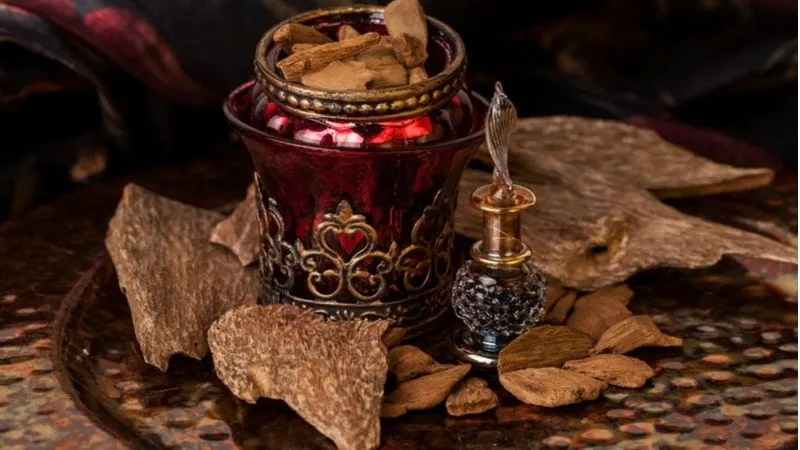
Wondering what is Bakhoor? Well, it comes from the dark heartwood of trees and is used quite frequently by the people of Qatar in various forms. Oud is used for cultural as well as religious purposes. So, now that you know what oud is, are you curious about Bakhoor? Very well then, it is the smoke that is created from burning oud. You can easily find the scent of Bakhoor in Qatar, almost in every corner of the country. You can find it in their cars as well as in their households. Bakhoor tradition in Qatar is quite common. It usually comes in three forms raw form, that is, it is shaped like a flat and thin chip, in the form of oil, and in the form of perfumes.
Did You Know?
Did you know that oud smoke has a rich history dating back centuries? Derived from the resinous heartwood of agarwood trees, oud smoke is prized for its deep, woody scent that is both captivating and luxurious. It has been used in traditional Middle Eastern and Asian cultures for its therapeutic and spiritual properties. The smoke of burning oud creates an ambiance of tranquility and indulgence, making it a popular choice for relaxation and meditation. Its unique fragrance has also made it a sought-after ingredient in the world of perfumery, adding a touch of exotic allure to fragrances. Discover the enchanting world of oud smoke and let its timeless aroma transport you to a realm of sensory bliss.
Bakhoor Tradition Qatar: Uses of This Pragmatic Aroma

When oud is burned in the raw form, it releases Bakhoor. You can burn this form of oud in a stand that especially goes around by the name of Bakhoor Stand, and just in case you don’t have it you can also use several layers of aluminum foil and place them in a glass bowl. Here’s an interesting fact, Oud, if used in raw form, has medicinal purposes, it can be used by patients suffering from breathing problems, people who feel light-headed can also use it, plus it is also good for heart palpitations.
If you opt for oud bakhoor in oil form, you'll discover its multifaceted benefits. Embracing its Ayurvedic qualities, practitioners believe it enhances focus and dispels negativity. Allow the captivating scent of oud bakhoor oil to create a serene atmosphere, promoting clarity of mind and a positive aura. Experience the transformative power of oud bakhoor oil as it uplifts your spirits and brings inner harmony.
Oud also comes in form of perfumes. Just like any other bottle of perfume, you can find one at the shops in Qatar. This form of oud is easy to use and is very similar to that of a perfume, you just have to spray it on you and enjoy the amazing fragrance of oud. It is suitable for both men and women. When you talk about the culture of Qatar, one that comes to mind is the history of this beautiful nation, and as we all know Qatari culture draws its tradition from its religion. Earlier in the days when there were prophets people used to greet their guests with smoke made of oud.
For example, Qataris use Bukhoor to scent their bodies with oil or perfume and their garments and to scent their homes with Bakhoor smoke by carefully strolling around with the Bakhoor stand or the glass bowl. Some people enjoy silently reciting verses from the Quran while wandering about. It is believed that the smoke from Bukhoor signifies the conclusion of a gathering in Qatari society. While the visitors are still welcome, the night has over and it is time to leave.
Suggested Read: Festivals In Qatar: Discover The Culture, Art And Heritage of The Country
How To Create Bakhoor?
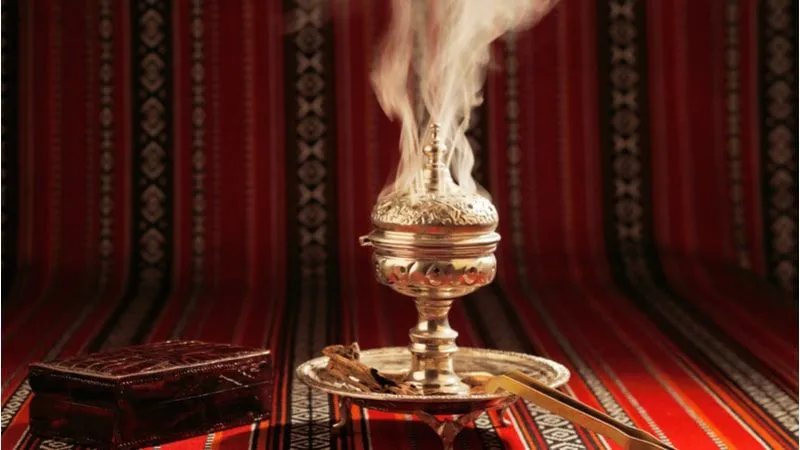
Bakhoor is a term used to describe processed incense that incorporates a variety of substances, usually but not always natural ones. Agarwood (oud) is also found in some high-quality Bukhoor chips and incense, either in the form of attar oil or in the form of a powdered wood. Since the most readily available Bakhoor on the market contains synthetic aromatic components, it might have an oily appearance in some circumstances. People drink it in a variety of ways. Traditionally, it is consumed by burning it, releasing its wonderful aromatic molecules into the air.
Keep the following items available when you want to burn Bakhoor at your own house:
- Bakhoor chips
- Incense burner or mabkhara
- Charcoal discs
On completion of the prerequisites of the creating Bakhoor, you can follow the following steps: -
To indulge in the captivating fragrance of Bakhoor oud, follow these steps. Place a charcoal disc (Mabkhara) in the incense burner and ignite it with a matchstick or lighter. Once sparks cross the coal and grey ash forms on top, it's ready for Bakhoor. Set the Bakhoor oud on the disc and savor the enchanting aroma that fills your home. After burning, cover the mabkhara with a clay dish to contain the coal until it cools completely. Enjoy the lingering scent of bakhoor oud that fills your space with an aromatic smell.
Suggested Read: Traditional Qatar Wedding: A Look At Qatari Matrimonial Culture
Some Interesting Facts About Oud Or Bakhoor Tradition of Qatar
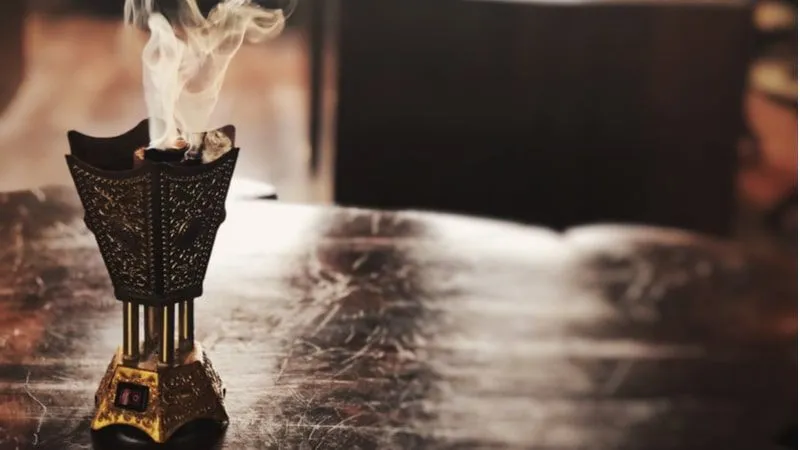
- Infected aquilaria trees produce the dark resinous heartwood known as agarwood, oodh, or lign-aloes, which is also known as oud, Oudh, agar, or aloeswood. An infected tree will produce a dark aromatic resin in response to the attack on its heartwood. The result will be dense, dark heartwood with a lot of resin embedded in it, which is what you see here in the form of oud.
- In several cultures, mostly in the Middle East, the resin embedded wood is known as gaharu, jinko, aloeswood, agarwood, or oud (not to be confused with Bakhoor), and is used for incense and perfume.
- The Convention on International Trade in Endangered Species of Wild Fauna and Flora has designated aquilaria as a potentially vulnerable species since 1995.
- In India, the state of Assam was once home to one of the world's largest natural stands of agarwood. Because of uncontrolled logging, one country that was previously a major source of agarwood has outlawed its harvesting and now imports it instead of producing it.
- Plantation agarwood is typically collected between the ages of five and ten. Although it can take up to a century for oud to reach its peak quality, it's worth the wait.
Suggested Read: Places To Visit In Riyadh: Top Attractions People Can Visit For An Astonishing Vacation
Qatar a land of traditions and culture is ruling over the hearts of every traveler. Bakhoor tradition in Qatar is one such thing that can be found in every Qatari household. From scenting the houses to using it as a perfume, Bakhoor is a pragmatic scent that will awaken all your senses. Plus it also has medicinal purposes. So, what are you waiting for ? Plan a trip to Qatar and enjoy the rich and diverse cultures of this nation.
FAQs
Bakhoor is a term used to describe processed incense that incorporates a variety of substances, usually but not always natural ones. The usage of smoke of Oud in different forms is known as the Bakhoor tradition. You can easily find it's scent in Qatar, almost in every corner of the country. You can find it in their cars as well as in their households. Bakhoor tradition is quite common in Qatar.
Bakhoor is available at almost all the shops in Qatar. You can find it literally every where, from traditional souqs to kiosks in malls. A variety of scents and qualities are available all at a varied price accordingly. You can choose the fragrance that suits you the best. Bakhoor is also said to be one of the best gifts to bring home to yourself or for gifting it to your loved ones.
It comes from the dark heartwood of trees and is used quite frequently by the people of Qatar in various forms. Oud is used for cultural as well as religious purposes. An infected tree will produce a dark aromatic resin in response to the attack on its heartwood. The result will be dense, dark heartwood with a lot of resin embedded in it, which is what you see here.
Yes, you can create Bakhoor at home. To create it at home you need Bakhoor chips, Incense burner or mabkhara, and Charcoal discs. In the Incense burner, place a charcoal disc fire the plate with a matchstick or lighter until you see sparks crossing the coal. Lastly, set the Bakhoor on a disc and you're ready to smell the entrancing perfume of Bakhoor.
The festivals celebrated in Qatar are: -
- Qatar National Day
- Ramadan
- Eid al-Fitr
- Eid al-Adha
- Doha Tribeca Film Festival
- Art Festival of Qatar
- Qatar International Food Festival
- Shop Qatar Festival
Some best traditions and festivities celebrated in Qatar are Aspire International Kite Festival, Qatar National Day, Bakhoor Tradition, Al-Shahaniya Camel Racing, Qatar International Art Festival, Ajyal Film Festival, Katara Traditional Dhow Festival, Doha Cultural Festival, Eid al-Fitr, and Qatar International Food Festival
Qatar stores some of the finest places to visit in the Middle East. Visitors can opt to visit some best places like - Souq Waqif, National Museum of Qatar, Museum of Islamic Art, Katara Cultural Village, Banana Island, Purple Island, Al Thakira Natural Reserve, Doha Corniche, Pearl Qatar, Katara Beach, Umm Bab Beach, Museum Of Illusions etc.
Agarwood or Aquilaria malaccensis has long been brought to the Arabian Peninsula by Indian traders. In ancient times it was known as the "wood of the gods" and the resin obtained from it is still called "liquid gold" because of the exorbitant prices. Agarwood is used for incense, perfume, traditional medicine, and other products.

